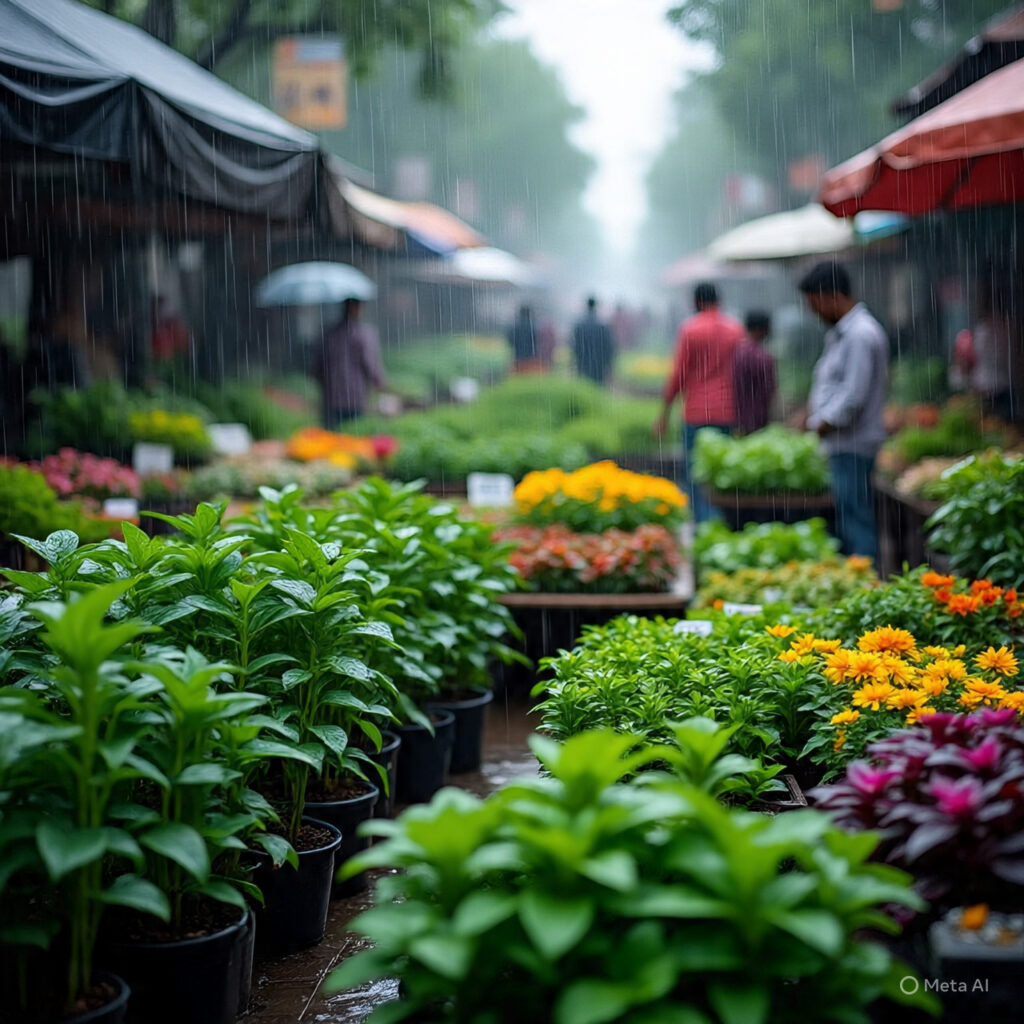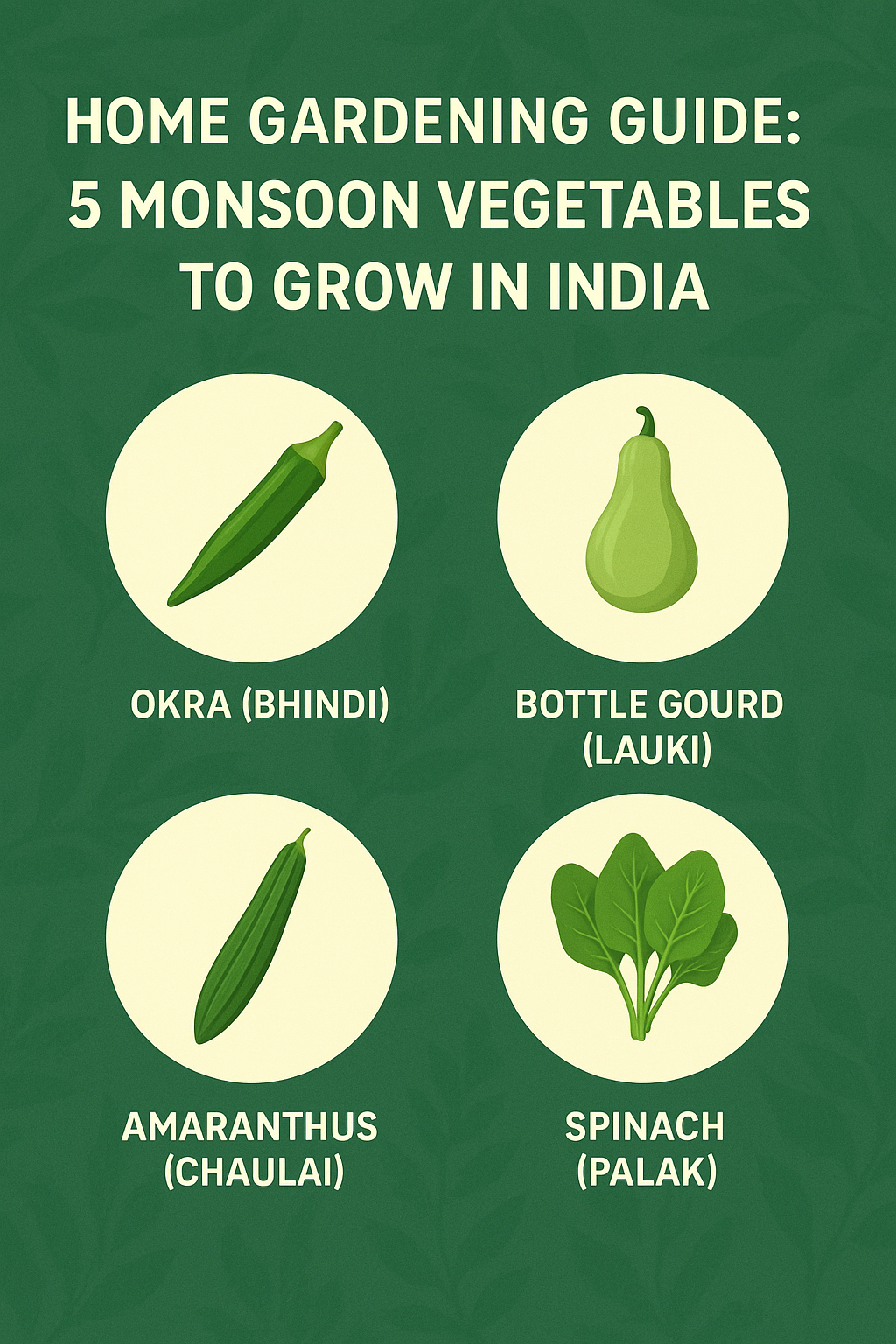The monsoon season in India, typically starting in July, peaking in August, and slowing down by September, is a magical time for gardening. With rainwater nourishing the soil, clean fresh air, and longer daylight hours, this is the perfect time to grow vibrant and lush rainy season plants in India. Foliage plants thrive beautifully during this time, bursting with every shade of green as if nature has painted them anew.
But don’t worry, flower lovers — the monsoon isn’t just for greenery! This season also brings an explosion of colors in the form of hardy, cheerful blooms. From low-maintenance flowering plants to striking blooms that love humidity, there are plenty of monsoon flowers you can grow to add life to your garden. In this blog, we’ll share the best plants to grow in the monsoon season in India that will turn your space into a lively, colorful paradise.
Top 5 Plants to Grow in the Monsoon Season in India
1. Balsam

- Common Name: Balsam, Terda
- Botanical Name: Impatiens balsamina
- Family: Balsaminaceae
- Plant Type: Annual flowering plant
- Origin: Native to India and Southeast Asia
- Height: Typically grows 12–24 inches tall
- Flowers: Bright, colorful blooms — pink, red, white, purple, or lavender
- Season: Best grown during the rainy season (monsoon)
- Easy to Grow: It grows easily from seeds and thrives with minimal care.
- Sunlight Needs: Prefers partial shade to filtered sunlight.
- Soil Type: Moist, well-draining, fertile soil with good organic matter.
- Watering: Regular watering is needed, but avoid waterlogging.
- Uses: Mainly grown for ornamental purposes in gardens and balconies.
2. Marigold

- Common Name: Marigold
- Botanical Name: Tagetes spp.
- Family: Asteraceae
- Plant Type: Annual or perennial (mostly annuals in India)
- Origin: Native to the Americas; widely naturalized in India
- Height: Varies from 6 inches to 3 feet, depending on variety
- Flowers: Bright yellow, orange, gold, and sometimes maroon shades
- Season: Grows well in rainy and winter seasons in India
- Easy to Grow: It grows easily from seeds and thrives with minimal care.
- Sunlight Needs: Requires full sunlight (at least 5–6 hours/day)
- Soil Type: Well-drained, moderately fertile soil; avoid heavy clay
- Watering: Water regularly, especially in monsoon, but ensure proper drainage
- Uses:
- Widely used for religious offerings, garlands, and festival decorations
- Excellent for pest control as it repels insects like aphids and nematodes
- Popular in home gardens, borders, and terrace pots
3. Cosmos

- Common Name: Cosmos
- Botanical Name: Cosmos bipinnatus, Cosmos sulphureus (common varieties)
- Family: Asteraceae
- Plant Type: Annual flowering plant
- Origin: Native to Mexico and Central America; widely grown in India
- Height: 1 to 5 feet tall (depending on the variety)
- Flowers: Daisy-like flowers in pink, white, orange, yellow, and red
- Season: Grows best in rainy and post-monsoon seasons
- Sunlight Needs: Requires full sunlight for best flowering
- Soil Type: Prefers well-drained, slightly sandy soil; tolerates poor soil conditions
- Watering: Moderate watering; avoid overwatering during heavy rains
- Uses:
- Popular in flower beds, borders, and wildflower gardens
- Attracts pollinators like butterflies and bees
- Great for cut flowers and decorative arrangements
4. Zinnia

- Common Name: Zinnia
- Botanical Name: Zinnia elegans
- Family: Asteraceae
- Plant Type: Annual flowering plant
- Origin: Native to Mexico
- Height: 6 inches to 3 feet tall, depending on the variety
- Flowers: Bright, bold blooms in red, pink, orange, yellow, purple, and white
- Season: Grows well in rainy and early winter seasons in India
- Sunlight Needs: Requires full sun (6–8 hours daily) to thrive and flower profusely
- Soil Type: Grows best in well-drained, loamy soil enriched with compost
- Watering: Water moderately; allow soil to dry slightly between watering during heavy rains
- Uses:
- Excellent for flower beds, borders, and pots
- Attracts butterflies and bees, making it great for pollinator gardens
- Popular for cut flowers due to long-lasting blooms
5. Portulaca

- Common Name: Portulaca, Moss Rose
- Botanical Name: Portulaca grandiflora
- Family: Portulacaceae
- Plant Type: Low-growing, flowering succulent (annual)
- Origin: Native to South America
- Height: 6 to 8 inches tall
- Flowers: Small, rose-like blooms in red, yellow, orange, pink, white, and bi-color varieties
- Season: Ideal for rainy and summer seasons in India
- Sunlight Needs: Requires full sunlight for best flowering; blooms only in bright light
- Soil Type: Grows best in sandy, well-drained soil; tolerates poor, dry soils well
- Watering: Minimal watering is needed due to its succulent nature; avoid overwatering during heavy rains
- Uses:
- Excellent for ground covers, hanging baskets, borders, and rock gardens
- Perfect for terrace gardens or balcony pots with shallow soil
- Attracts bees and small pollinators
Conclusion
The monsoon season in India is the perfect time to give your garden a fresh and vibrant makeover. With the right selection of rainy season plants in India, you can enjoy lush green foliage, colorful blooms, and a naturally thriving outdoor space. Whether it’s cheerful flowers like Marigold, Zinnia, and Cosmos, or easy-care ground covers like Portulaca, monsoon gardening offers beauty with minimal effort.
So, embrace the freshness and fertility that the monsoon season in India brings — plant, nurture, and watch your garden burst into life. Don’t forget to share your favorite monsoon plant in the comments and tag us in your blooming garden photos!
FAQs
1. What is the best flower to grow in the rainy season in India?
Marigold is one of the best flowers to grow in the rainy season in India due to its hardiness, vibrant blooms, and low maintenance needs.
2. Which herbs grow well in the monsoon?
Some herbs that grow well in the monsoon season include Tulsi (Holy Basil), Coriander (Dhaniya), Mint (Pudina), Lemongrass, and Curry Leaves (Kadi Patta) — all of which thrive in the moist, warm conditions of the Indian monsoon.
3. How to protect plants from too much rain?
To protect plants from too much rain during the monsoon:
- Ensure proper drainage to prevent root rot.
- Use raised beds or pots with drainage holes.
- Add mulch to avoid soil erosion and splashing.
- Prune excess foliage to reduce fungal risk.
- Move potted plants to covered or sheltered areas during heavy downpours.
These simple steps help keep your plants healthy and thriving in the rainy season.



